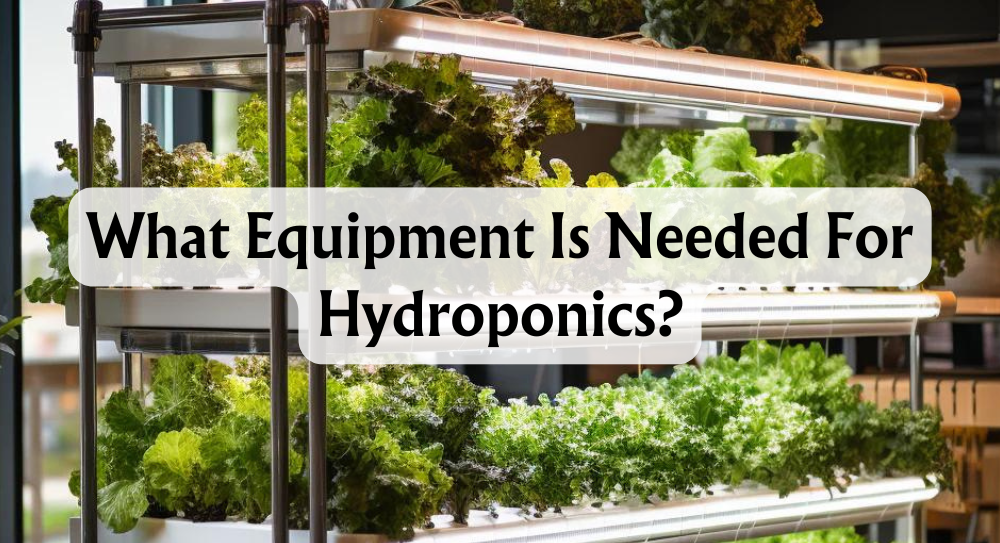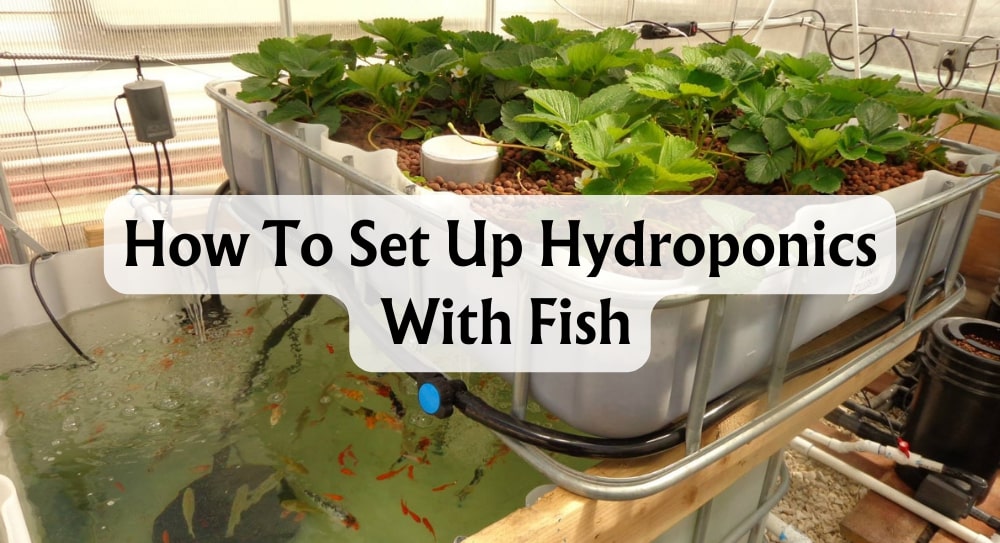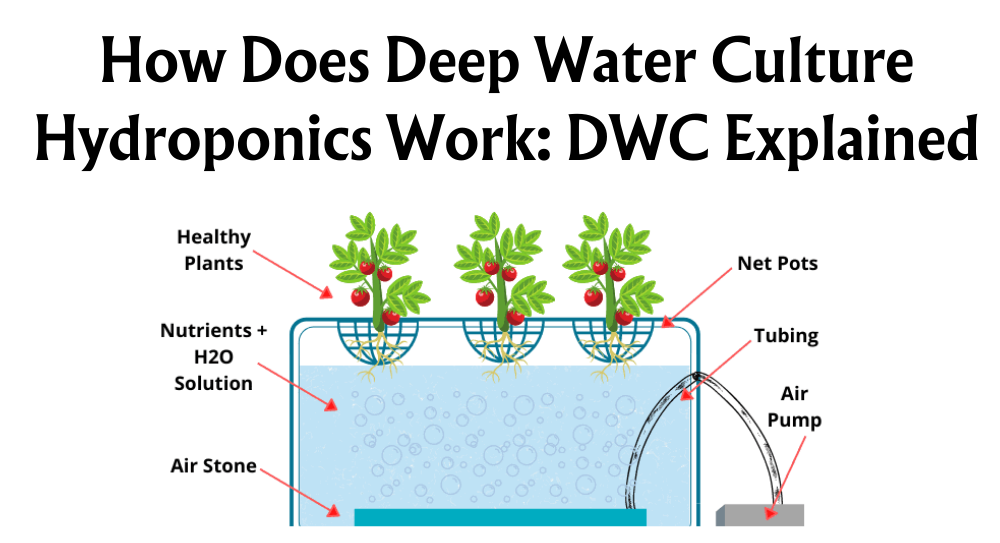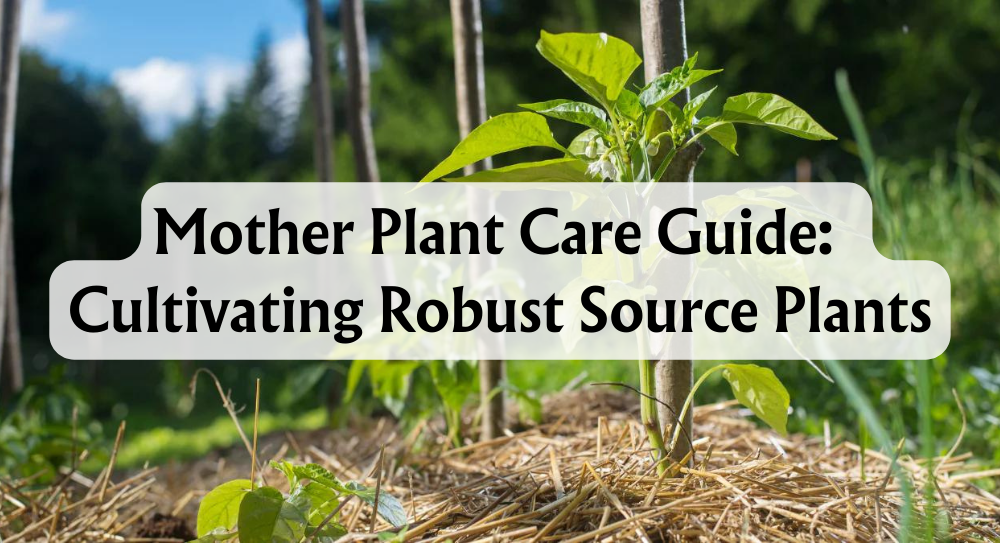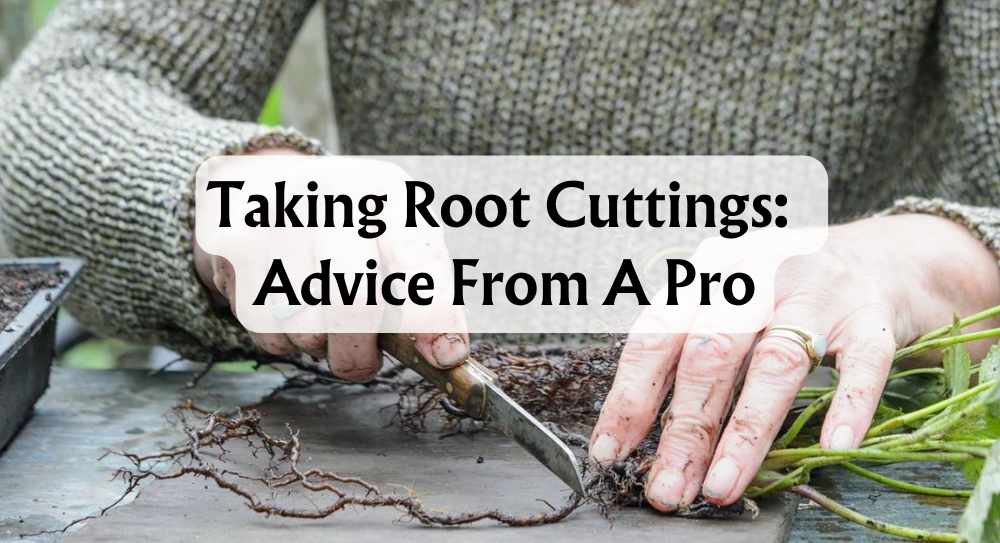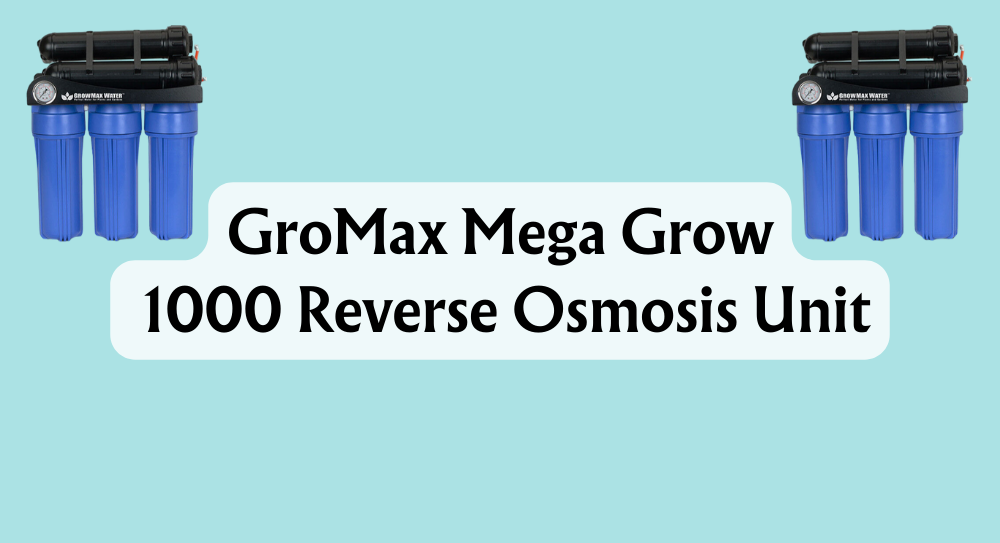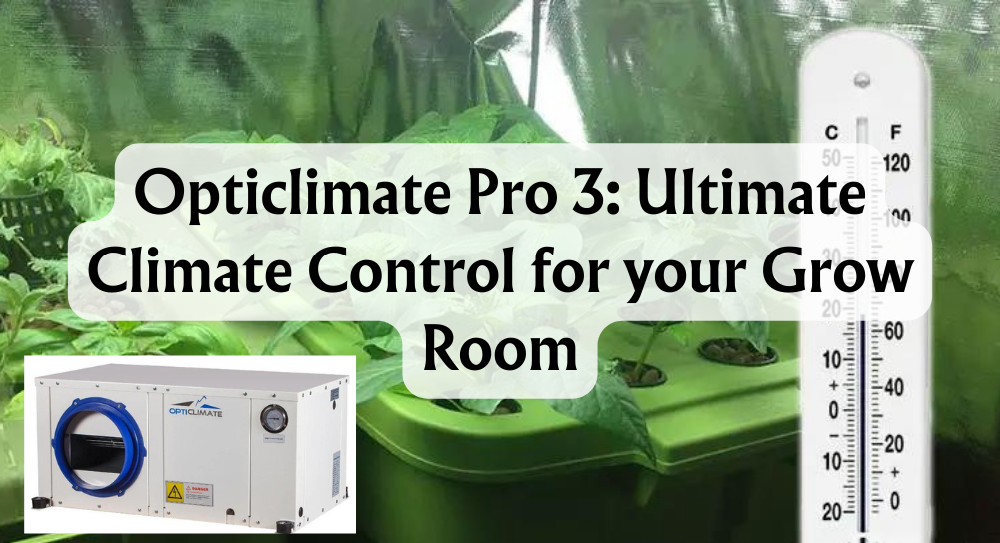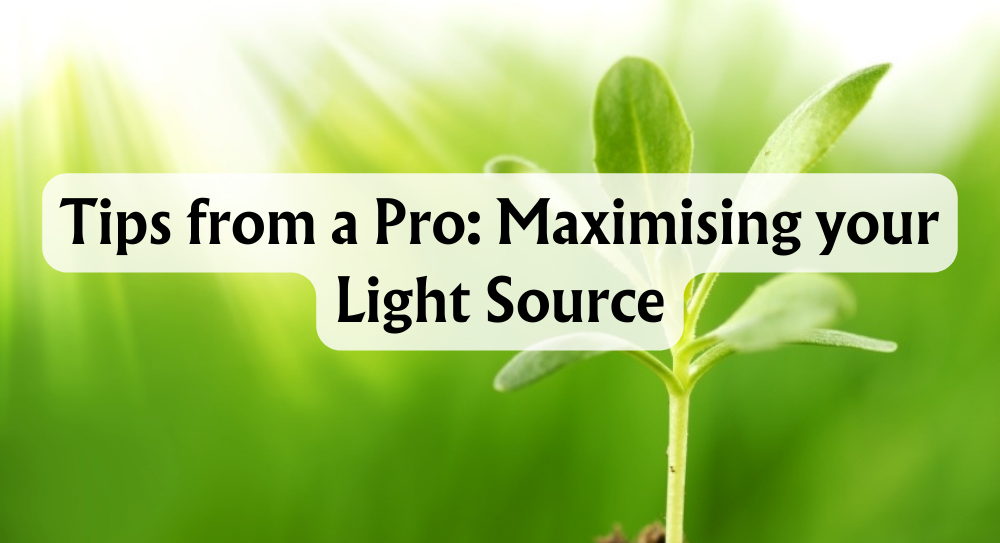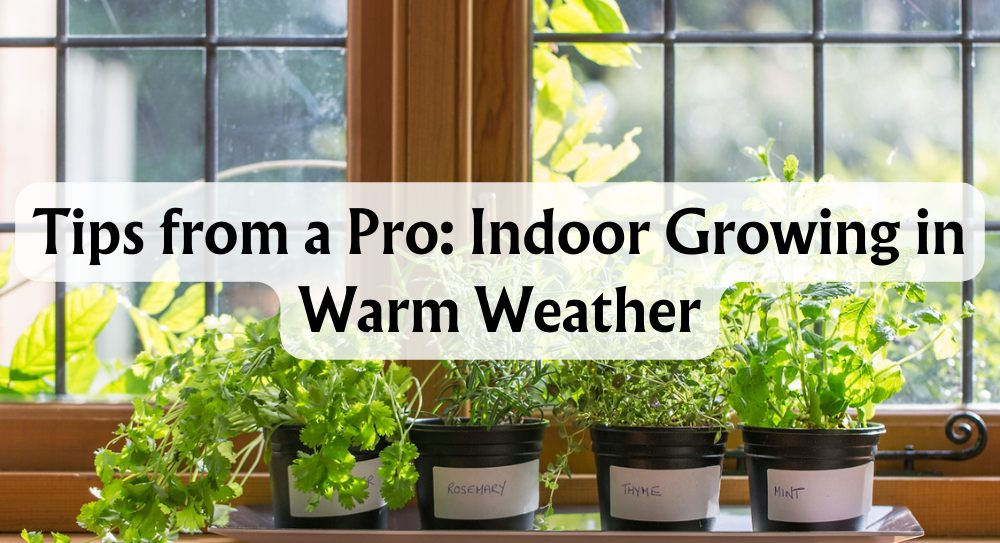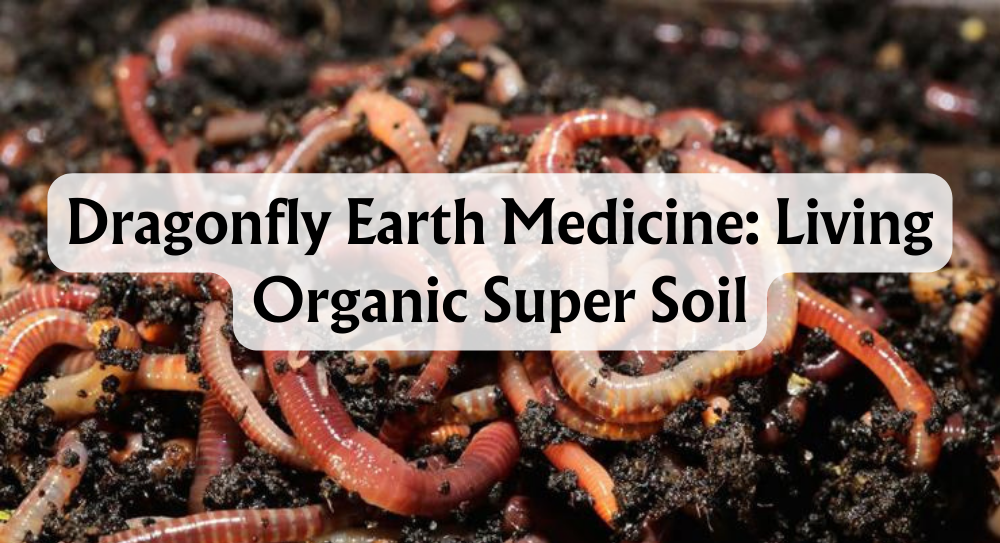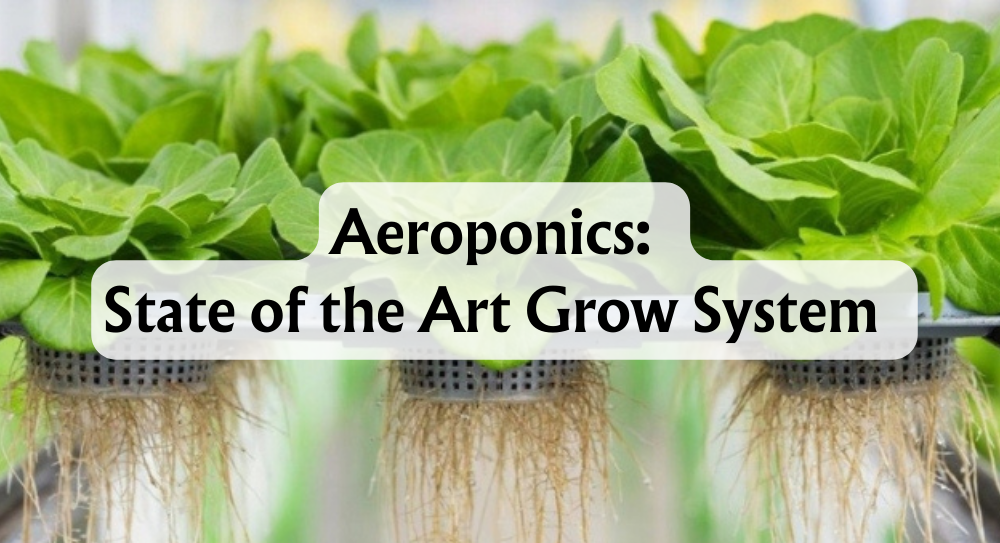What Equipment is Needed for Hydroponics?
Are you curious about growing plants without the hassle of weeding and tilling the soil? Hydroponics might just be the type of system you're looking for! This innovative method allows us to grow plants in a water-based, nutrient-rich solution, skipping the soil entirely. The perks of hydroponics are plentiful — we're talking potentially higher yields, a significant reduction in water usage, and unparalleled control over the growing environment.

Now, for those of us itching to dive into this soil-less agriculture, understanding what equipment is necessary is critical. In this article, we're determined to arm you with an exhaustive list of essentials. Rest assured, we've got every hydroponics system covered, from the basic wick system to the more complex aeroponics. The goal is simple: to ensure you've got the know-how to cultivate a thriving hydroponic garden from the ground up — or should we say, the water up?
We'll guide you through the absolute must-haves: lighting, water reservoirs, substrates, and nutrients, ensuring your plants get all they need. We'll also address the varying requirements of different hydroponic systems, so whether it's a Deep Water Culture (DWC) or a Nutrient Film Technique (NFT) that's caught your fancy, we've got you sorted.
Key Takeaways
- Hydroponics offers a way to grow plants in nutrient-rich water without soil, leading to higher yields and less water usage.
- Essential equipment includes lighting, water reservoirs, substrates, and nutrients tailored to various hydroponic systems.
- Understanding the different requirements for wick, drip, DWC, ebb and flow, NFT, and aeroponic systems is critical for success.
Necessities For All Hydroponics

When setting up our hydroponic garden, there are four basic components we just can't do without: light, water, substrate, and nutrients. These key players are the pillars of a healthy, thriving plant environment. Let's dive in!
Light
First things first, our plants need light to perform photosynthesis and grow. While nothing beats the sun for providing a full spectrum of light, we're not always blessed with sunshine, especially indoors or growing in a greenhouse. That's where artificial light comes to the rescue.
- Natural Light: It's free and effective, but we're at the mercy of the weather and seasonal changes.
- Artificial Light: Options like LED grow lights, High-Intensity Discharge (HID) bulbs, and fluorescent lights are our go-to for consistency.
Choosing the Right Artificial Light:
| Type | Advantages | Disadvantages |
|---|---|---|
| LED | Energy-efficient, lasts longer | The initial cost could be higher |
| HID | Strong penetration, suitable for larger setups | Generates heat, may need a fan |
| Fluorescent | Ideal for seedlings, lower heat production | Less effective for flowering |
Ensure the right colour, intensity, and duration are set for our beloved greens, and position lights the right distance from our plants to mimic a sunny day.
Water
One can't talk about hydroponics without water. Water and nutrients are how our plants drink and feed. Not just any H2O will do; we prefer using purified water to avoid unwanted minerals messing with our system.
- Tap Water vs. Purified Water: Tap might contain chlorine or fluorides; we opt for purified to keep our plants quenching thirst safely.
Water purification methods:
- Distillation
- Filtration
- Reverse Osmosis
Water Factors:
- Temperature should mimic a mild day to avoid shocking our plant's systems.
- pH levels must be kept balanced around 5.5 to 6.5—plants are picky drinkers.
- Dissolved oxygen is a must for root health—let's not let them suffocate!
Substrate
No soil, no problem when it comes to the growing medium. We anchor our plants in a soilless substrate like rockwool or coco coir. These give our plants' roots something to hug while letting them breathe and feast on that nutrient-rich water.
Soilless Substrate Choices:
- Perlite
- Vermiculite
- Coco Coir
- Rockwool
- Clay Pebbles
Substrate Selection: We choose based on how much water and air retention we need, ensuring proper sterilisation to protect against any unwanted pathogens.
Nutrients
Plants gotta eat, and in hydroponics, we're their personal chefs. A blend of nitrogen, potassium, phosphorous, magnesium, and calcium makes a fine plant feast.
- Organic vs. Synthetic: Organic tends to be gentler, but synthetic nutrients are precise and readily available for our plants.
Types of Synthetic Nutrients:
- Liquid (easy to mix)
- Powder (cost-efficient)
Nutrient Use Tips:
- Focus on the concentration to avoid nutrient burn.
- Balance the fertilizer nutrients' ratios to cater to our plant's specific dietary needs.
- Monitor frequency—consistency is key to keeping our green friends healthy and strong.
Nurturing our plants with these four cornerstones of hydroponic success. Remember, it's all about balance and giving our plants what they need when they need it.
Different Systems, Different Materials
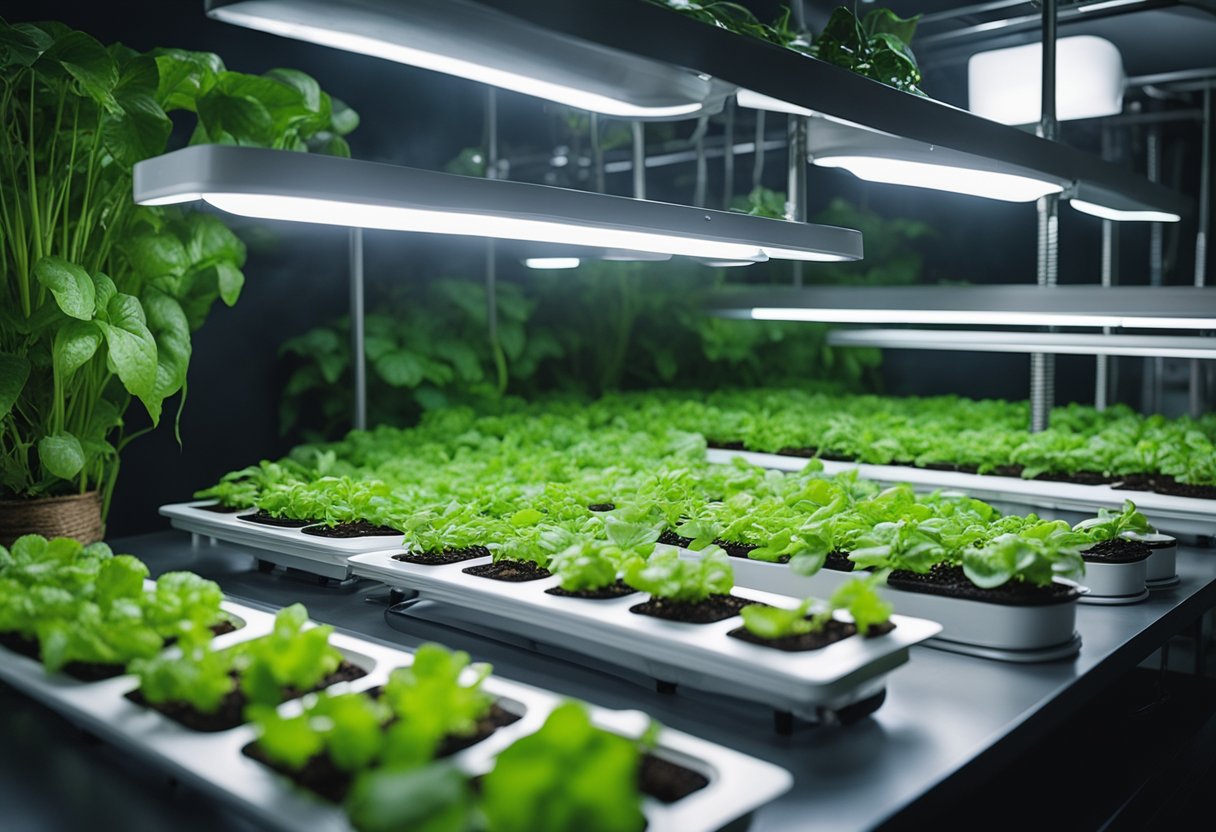
When we talk about setting up our hydroponic grow, it's crucial to know that each system has unique material and equipment requirements. Let's explore what we'll need for each type, keeping in mind their design, operation, and how they can help us maintain a thriving indoor garden efficiently.
Wick Materials
The wick system is our go-to for a no-fuss introduction to hydroponics. As gardeners, we savour its low cost and ease of use, though we should remember it's better suited for smaller plants and herbs. To get it up and running, we will require:
- A reservoir for our nutrient solution
- A container to house the plant and substrate
- A wick, like cotton or nylon, to carry nutrients to the roots
- A moisture-retaining substrate like coco coir
- A balanced nutrient solution
To maintain our wick system, we'll place the reservoir below the container, ensure the wick is properly positioned, and regularly check the nutrient levels.
Drip Materials
Moving onto the drip system, we appreciate its precision in delivering nutrients to the plants. Perfect for a diverse range of plants, this system needs a bit more attention to avoid clogging and to ensure all components work seamlessly together. We'll need:
- A reservoir for our concentrated nutrient mix
- A container or trays for our plants
- A reliable pump and timer to control nutrient delivery
- Drip lines or tubing with emitters to reach the base of each plant
- A well-draining substrate like perlite
We'll set our timers to feed our plants at optimal intervals, checking and refilling our reservoir regularly to keep our plants flourishing.
DWC Materials
In a Deep Water Culture or DWC system, hydroponic plants see rapid growth thanks to their roots being bathed continuously in water and nutrient solution. This simplicity and high efficiency do come with a watch out for temperature changes. Here's what we'll gather:
- A reservoir to submerge the plant roots in nutrients
- Net pots to cradle the plants
- An air pump and air stone to oxygenate the water
- Tubing to connect the air pump to the air stone
- A stable substrate to support our plants, like clay pebbles
We'll maintain our DWC system by keeping an eye on the water level and hydroponic solution, along with regular checks for any system blockages.
Ebb And Flow Materials
For those of us craving flexibility, the ebb and flow system is a champion. It's all about timing, and conserving water by flooding and draining the grow tray repeatedly. Here's what we'll assemble:
- A sizeable reservoir
- A grow tray or table for our plants
- A pump and timer to flood and drain the tray with nutrient solution
- A well-aerated substrate, such as grow rocks or gravel
We'll keep a close eye on the timing device, ensuring the ebb and flow cycle is consistently providing moisture to our plants with minimal fuss.
NFT Materials
The Nutrient Film Technique, or NFT system, allows a thin film of nutrient solution to flow over the roots. Its low water usage makes it a hit. We require:
- A reservoir to circulate the nutrient solution
- A tray or channel to guide the solution over the roots
- A pump to move the solution constantly
It's vital to monitor the flow to prevent dry spots, which can quickly lead to unhappy plants in our NFT setup.
Aeroponics Materials
Lastly, aeroponics showers our plants' roots with mist, offering them maximum oxygen exposure. The materials and effort for this high-pressure system are considerable, but the growth results can be amazing. We'll need:
- A closed reservoir
- A high-pressure pump
- Misting nozzles to create a fine mist
- A supportive structure to hang the plants, such as a net pot
While aeroponics can be high maintenance, regular checks ensure the nozzles aren't clogged, and the mist is reaching the roots are a small price to pay for the lush bounty we can achieve.
In essence, our choice in hydroponic systems influences the materials we need and how we engage with our beloved plants. By aligning our system with our garden aspirations and committing to the necessary maintenance, we can cultivate a verdant garden that's the envy of our green-fingered friends.
Maintaining Your Hydroponic System
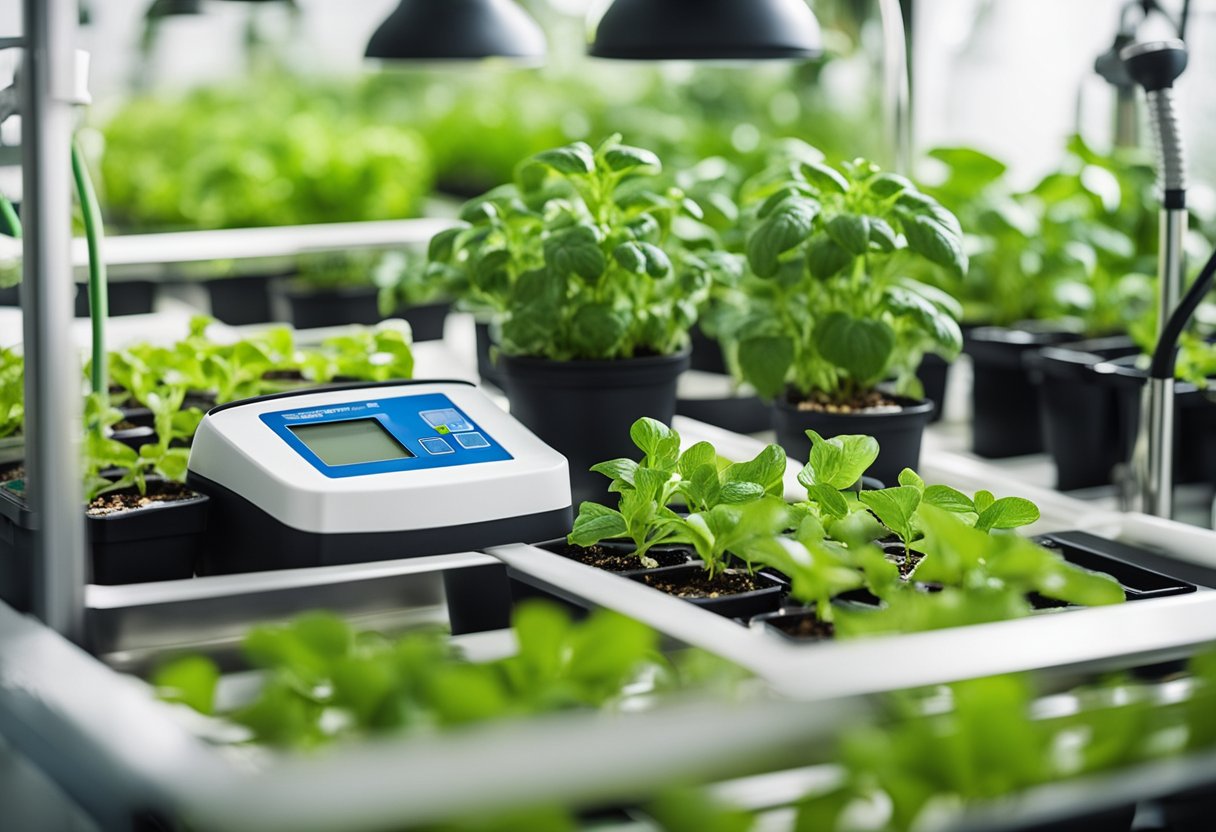
We all know that diving into hydroponics is exciting, but remember, it's not just about setting up and growing. Maintenance is key to healthy plants and abundant yields. Let's chat about the essentials:
First off, keeping an eye on the pH levels - it's all about balance. A pH between 5.5 and 6.5 is perfect for our plant pals. Handy pH meters can be your best mate here!
Then there's temperature. Just like us on a sunny holiday, our plants thrive at certain temperatures. Keep the nutrient solution around 20°C – it's the sweet spot.
Oxygen? Absolutely vital. Ensuring the roots get plenty of oxygen will make your plants thank you – they can't breathe underwater like fish!
And who invited algae to the party? To keep algae growth at bay, block out light from any water sources and clean regularly. No one wants a green slime crasher.
Monitoring your system is not just about acting like Big Brother. It's about giving your plants what they need when they need it. Sensors and meters can help track everything from nutrient levels to carbon dioxide, so you can adjust in real time.
Here's a quick checklist:
- pH meter: To keep those pH levels just right.
- Temperature gauge: For that 20°C nutrient solution.
- Oxygen pump: To help the roots breathe easy.
- Algae prevention: A bit of block-out material can work wonders.
- Sensors and meters: Your eyes and ears when you're not around.
Troubleshooting And Solving Common Issues
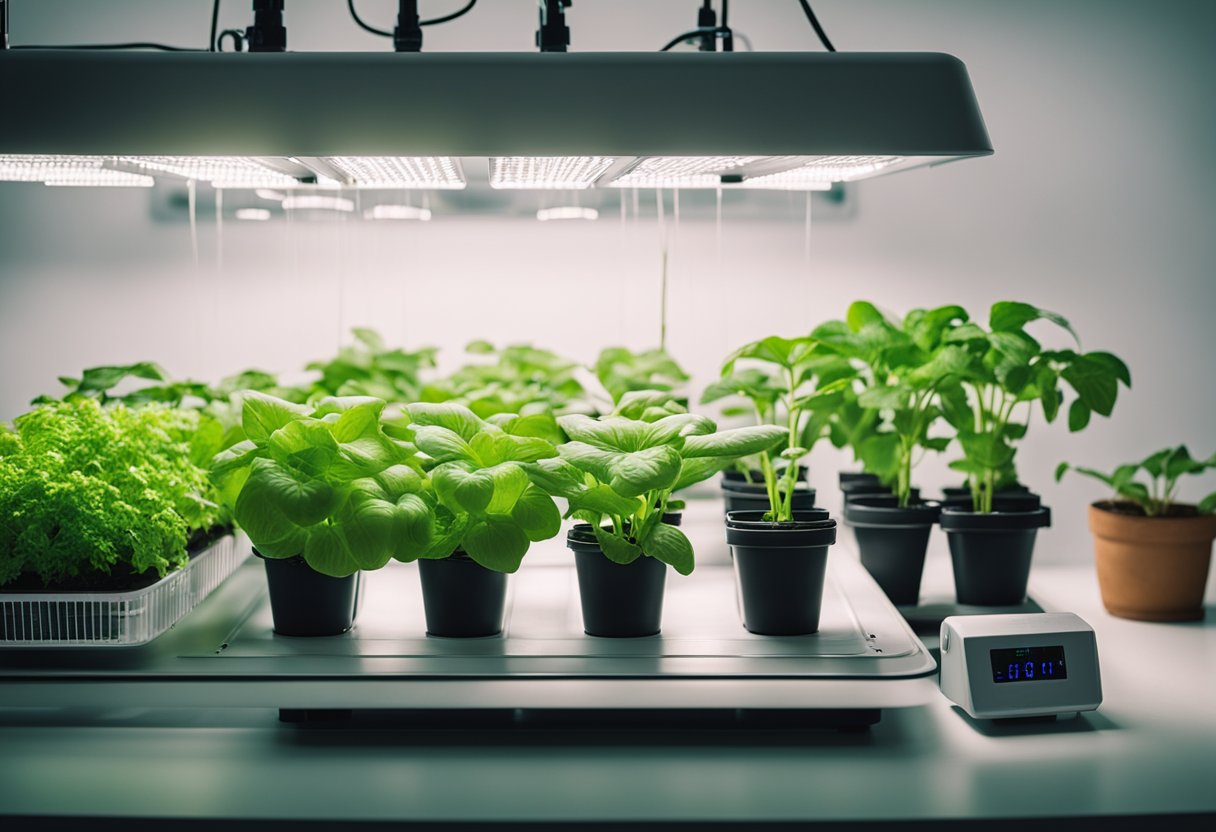
Got a bit of a hiccup with your hydroponics setup? No worries, we've got you covered! Here's a straightforward guide on tackling the trickiest situations so your plants can thrive again.
Pests & Diseases:
- Pests: If you spot uninvited bugs, it’s time to get your hands on some neem oil or insecticidal soap. Be sure to apply it evenly to keep those pesky critters at bay.
- Diseases: Keep your eyes peeled for any unusual plant behaviour. Spotted leaves? Could be a fungal issue. Remove affected leaves and ensure good air circulation around your plants.
Nutrient Deficiencies:
- Yellowing leaves? Your plants might be crying out for more nitrogen. A boost in nutrient solution should do the trick.
- Weak stems? Potassium could be the missing piece of the puzzle. Add it to your mix for stronger plant support.
Algae & Root Rot:
- Algae: Nasty green stuff getting a foothold? Block out the light on any water surfaces, and consider adding a UV steriliser to zap that algae away.
- Root Rot: Overly soggy roots are a no-no! Ensure proper oxygen levels in your nutrient solution to prevent this soggy situation.
Troubleshooting Tips:
- Regular checks: Keep a close eye on your system, daily if possible.
- pH and EC levels: Test them regularly to maintain the ideal environment for your plants.
Here are a couple of quick tips to keep in your back pocket:
- Keep it clean, folks. A tidy space is a happy space for your plants and less inviting for those uninvited guests—yes, we're looking at you, pests and diseases.
- Don't forget a little TLC. Our plants are just like us; they appreciate attention. So give them what they need and they'll return the favour with some smashing growth.
Remember, every problem has a solution, with a bit of know-how we can sort out those system snags and get back to the fun of soilless gardening!
Costs And Considerations For Starters
When we're eager to dip our toes into hydroponics, it's easy to get swept up in the excitement. But let's talk brass tacks – setting up a hydroponic garden isn’t just about getting our hands dirty; it’s about diving into our wallets, too.
Starting Budget - You’ve got options here! For the DIY enthusiast, conjuring up a basic hydroponic system from scratch could start from as little as a few quid. A bit of creativity goes a long way! But if you're leaning towards convenience, starter kits are ideal. These can range from £20 to over £100, depending on the system's complexity.
Sustainability vs. Initial Investment - Here’s the trade-off: a higher upfront investment often means a more sustainable system long-term. Think energy-efficient LED grow lights and a sturdy framework. But fear not, investing a bit more at the start can often lead to fewer heartaches (and wallet-aches) down the road – we’re talking less frequent replacements and lower energy bills.
Budgeting Wisely - Let’s crunch some numbers:
- DIY Systems: Minimal investment, great for learning the ropes.
- Kits: Higher cost, but hey, they're usually plug-and-play.
- Sustainability Factors: Energy-efficient equipment – a bit pricier but kinder to both the environment and our energy bills in the long run.
A cheeky tip: Look out for expandability. Some kits let us add more modules without having to start from scratch, giving us more bang for our buck.
Remember, our goal is to balance cost-effectiveness and efficiency. With a bit of savvy shopping and some smart choices, we'll get our hydroponic garden flourishing without breaking the bank. So let's put our green thumbs and our financial sense to work – it’s time to grow!
Conclusion
We've had quite the journey exploring the essentials of hydroponic equipment. As we look forward, the future of hydroponics appears bright and full of potential. New technology and innovative practices may make these systems even more efficient and user-friendly. But let's recap what you'll need to get started:
- Reservoir: Your plants are thirsty! Each small plant will need at least 1/2 gallon of water, while medium plants require 1 to 1 1/2 gallons, and large ones need a minimum of 2 1/2 gallons.
- Net Pots: These little homes for your plants allow roots to breathe and access nutrients.
- Grow Trays: Used in systems like the wick setup, these trays support your plants.
- Pumps and Air Stones: Oxygenating your nutrient solution is key, with non-submersible air pumps and air stones for bubbly, happy roots.
- Heat Mats: Keeping those roots cosy at around 80-85 degrees Fahrenheit encourages growth, especially in mediums like Rockwool.
Don't forget, that regular maintenance with trimmers or scissors will keep your plants in top shape.
As hydroponic gardeners, we must stay engaged with the latest trends and techniques. This not only helps our plants thrive but also ensures we're on top of our gardening game. And there's always something new to learn - be it a cutting-edge nutrient mix or a state-of-the-art lighting system.







 Store Locator
Store Locator
